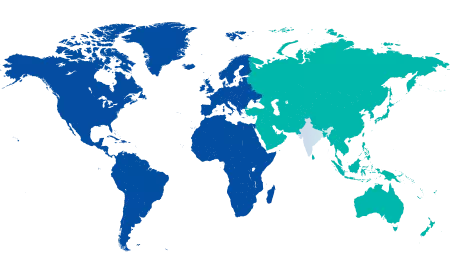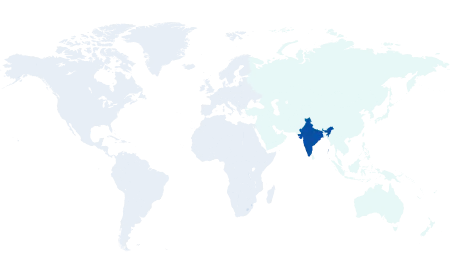-
Centre of
Excellence
Centre of Excellence
Other Specialities
- Allergy and Immunology
- Andrology
- Anesthesiology
- Dental Medicine
- Dermatology
- Diabetes and Endocrinology
- Ear Nose Throat
- Electrophysiology
- Fetal Medicine
- General Medicine
- General Surgery
- Geriatric Medicine
- GI Surgery
- Growth and Hormone
- Gynaec Oncology
- Hand Surgery
- Hemato Oncology
- Hematology
- Hepatobiliary Surgery
- ICU and Critical Care
- Infectious Disease
- Internal Medicine
- Interventional Radiology
- Kidney Transplant
- Lifestyle Clinic
- Medical Gastro
- Medical Oncology
- Microbiology
- Minimal Access Surgery
- Neonatology & NICU
- Nuclear Medicine
- Nutrition And Dietetics
- Ophthalmology
- Oral Maxillo Facial Surgery
- Paediatric Urology
- Pain Medicine
- Parkinson Disease and Movement Disorder
- Pathology
- Pharmacy
- Physiotherapy
- Plastic And Cosmetic Surgery
- Psychiatry
- Pulmonology (Respiratory and Sleep Medicine)
- Radiology
- Radiotherapy (Oncology Radiation)
- Renal Sciences
- Surgical Gastro
- Surgical Oncology
- Transfusion Medicine
- Vascular and Endovascular Surgery
Speciality Clinics
- Doctors
- Dhakuria
- International Patients



Clinics








- Self Registration
- Mars - Ambulance
- Corporate & PSU
- Insurance Helpdesk
- Awards And Achievements
- Careers
- Contact Us

Solutions in Oesophagectomy Gastrectomy and Colectomies
Solutions in Oesophagectomy, Gastrectomy, and Colectomies in Dhakuria, West Bengal
Previously, the treatment procedures for Oesophagectomy, Gastrectomy, and Colectomies typically involved Open-sugeries. However, advancements in medical technology and surgical techniques have revolutionised surgeons' ability to address gastrointestinal conditions by adopting minimally invasive methodologies such as Laparoscopy and Robotic-assisted Surgeries. Moreover, minimally invasive procedures have been shown to have decreased hospital stays, minimised perioperative complications, and reduced intraoperative bleeding compared to Open-surgeries. The treatment has been successful in addressing various types of illnesses, including advanced stages of gastric, oesophageal, and colon cancer, particularly in cases where surgical intervention was necessary, even when accompanied by certain complications.
Specialists in the Department of Organ Transplant at Manipal Hospitals, Dhakuria, West Bengal, perform several Minimally Invasive or Keyhole Surgeries by utilising cutting-edge techniques, ensuring comprehensive and world-class care for patients. Using specialised instruments and tools with camera-tipped devices, surgeons in the department possess tremendous experience in employing Laparoscopic or Thoracoscopic interventions to enhance surgical precision and patient outcomes. Backed by a dedicated team of medical professionals and highly skilled staff, the department strives to prioritise patient safety and comfort throughout their treatment journey. If you are looking for solutions in Oesophagectomy Gastrectomy and Colectomies in Dhakuria, do visit Manipal Hospitals.
FAQ's
During the procedure, anaesthesia is administered, and if necessary, an epidural catheter is placed on your back to manage pain. Specialists will make 3 - 4 small incisions in your neck, chest, or abdomen to access the oesophagus and remove the affected part of the oesophagus. Using specialised instruments and camera-assisted devices, the surgeons then reconnect the remaining oesophagus by pulling up the stomach or small intestine to your chest or neck area (anastomosis). In the case of oesophagal cancer, lymph nodes are removed, which are then sent for Biopsy to rule out malignancy. After the procedure, you will be shifted to the recovery room, where a feeding tube is placed through the abdomen, connecting to the small intestine, helping you to get adequate nutrition during your recovery. You will also have a nasogastric tube that aids in sucking out excess air in your stomach to enhance healing and will be removed once you don't need it. In some cases, chest drains might be essential to empty fluid that has accumulated in the chest area.
Depending on the severity and type of procedure performed, you may spend at least one to two days in the intensive care unit (ICU), followed by a period of 7 - 14 days of hospital stay post-oesophagectomy. During this period, you will be asked to walk or sit on the side of the bed and wear compressed stockings to prevent thrombosis. Additionally, pain medications will be administered through a feeding tube to manage post-operative pain, along with some breathing exercises to clear your lungs. You will also receive instructions on how to take care of your feeding tube. Our specialists will tailor a personalised diet plan for patients as well as provide post-care instructions to facilitate healing.
One has to make a lot of adjustments after an Oesophagectomy procedure. Some individuals may take up to a year or two to feel fully healed and adjust to life after the procedure, although this may vary. Patients who have undergone a Minimally Invasive Oesophagectomy procedure can return to work within four weeks with minimal visible scars. Furthermore, you will continue to eat and drink through the feeding tube. You will then be transitioned to a liquid diet and eventually to soft foods. Our specialist will also provide individualised guidelines on how to take care of your wounds, including cleaning your feeding tube.
Depending on the complexity of your condition and its location, surgeons may perform any one of four types of Gastrectomy procedures, which include Total Gastrectomy (removal of the whole stomach), Partial Gastrectomy (removal of the distal part of the stomach), Sleeve Gastrectomy (removal of the left side of the stomach), and Oesophagogastrectomy (removal of the top part of the stomach and lower part of the oesophagus).
Surgeons may employ Open-surgery, where a large incision is made to remove the affected part of the stomach, or Minimally Invasive Gastrectomy, which involves small, multiple incisions with the help of a laparoscopic or thoracoscopic device. Our surgeons will determine the best approach to reconstructing your digestive system based on the surgery performed.
What is the duration of the procedure, and what would be the expected recovery time for Gastrectomy?
The duration of a Gastrectomy procedure might take 4–5 hours, depending on the technique and severity of the condition. Based on individual factors, patients might take at least 2 months to fully heal and be adjusted to life after undergoing a Gastrectomy procedure. Surgeons will provide personalised diet plans and instructions to help you recover. Since your stomach is removed, you will need to devise new eating habits and get habituated to them, which might take three to six months. Patients might take a month, although this may be different, to resume driving. You may need to work with your employer to take several weeks or a few months off, depending on the job type.
Our specialists will provide personalised dietary instructions or lifestyle modifications after a Colectomy procedure. However, general instructions include:
-
You can consume foods that help minimise diarrhoea, such as low-sugar cereals, boiled white rice, bananas, peanut butter, potatoes, tapioca, spinach, and yoghurt. Nonetheless, you may have to refrain from foods like non-pasteurised cheese that is soft, undercooked meat or fish, and foods and vegetables that are not washed.
-
Adhere to medications and the schedule prescribed by your specialist.
-
Exercising post-colectomy should be done with caution. You can start walking and eventually transition to running, although do not exert yourself.
-
Always stay hydrated after a Colectomy, and check for urine colour. While a clear or pale yellow is a good sign, a darker colour could mean stoma issues or dehydration.
-
Refrain from smoking or chewing tobacco, and limit your alcohol consumption.
For oesophagal, stomach, and colon cancer, these surgeries are important. However, some alternative treatment solutions can also be used, which greatly ensure alleviating symptoms and improving quality of life. Cancer treatment approaches include Chemotherapy, Radiotherapy, Immunotherapy, Targeted Therapy and Endoscopic procedures.
Home Dhakuria Specialities Organ-transplant Solutions-in-oesophagectomy-gastrectomy-and-colectomies



You’re on Our Indian Website
Visit the Global site for International patient services











